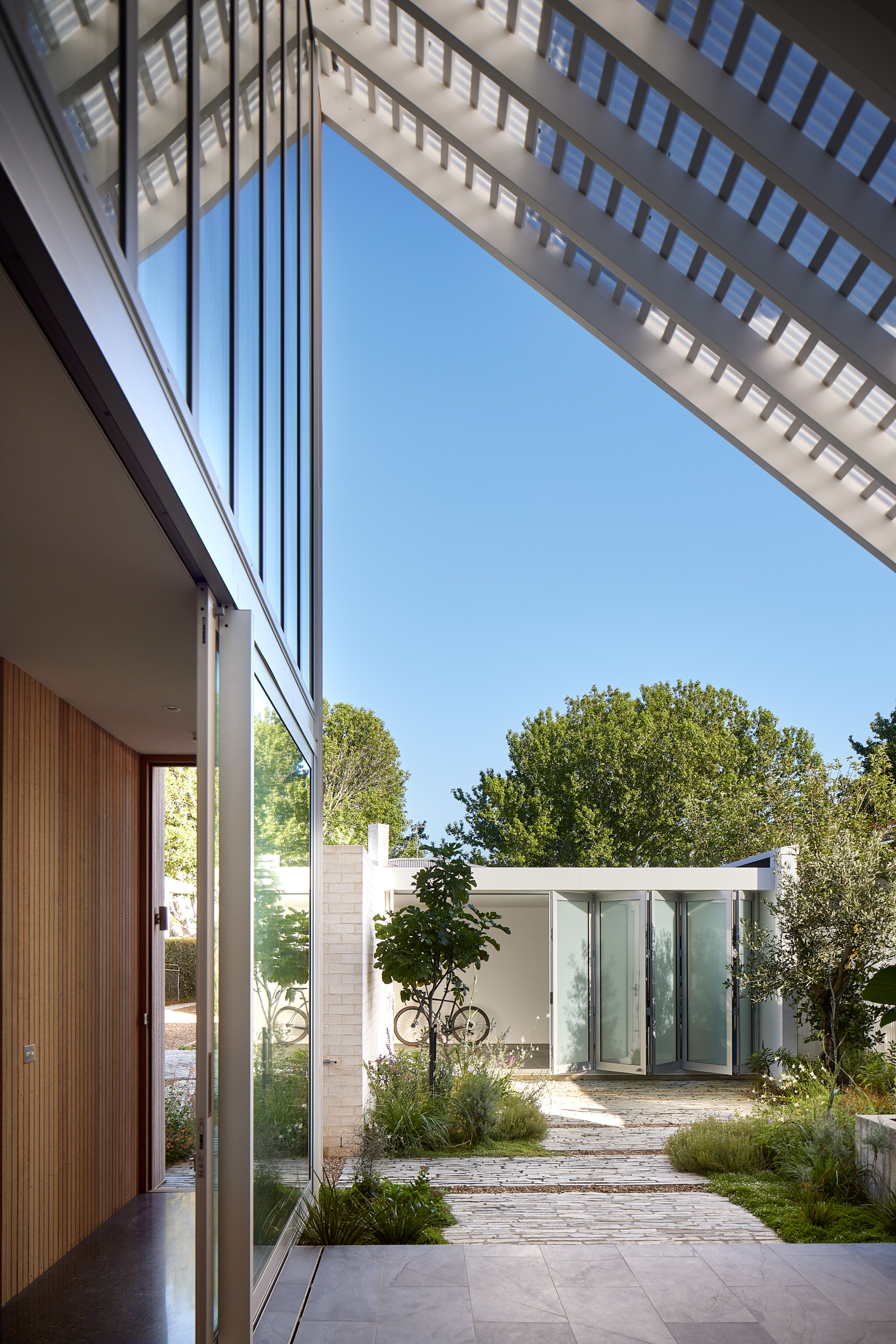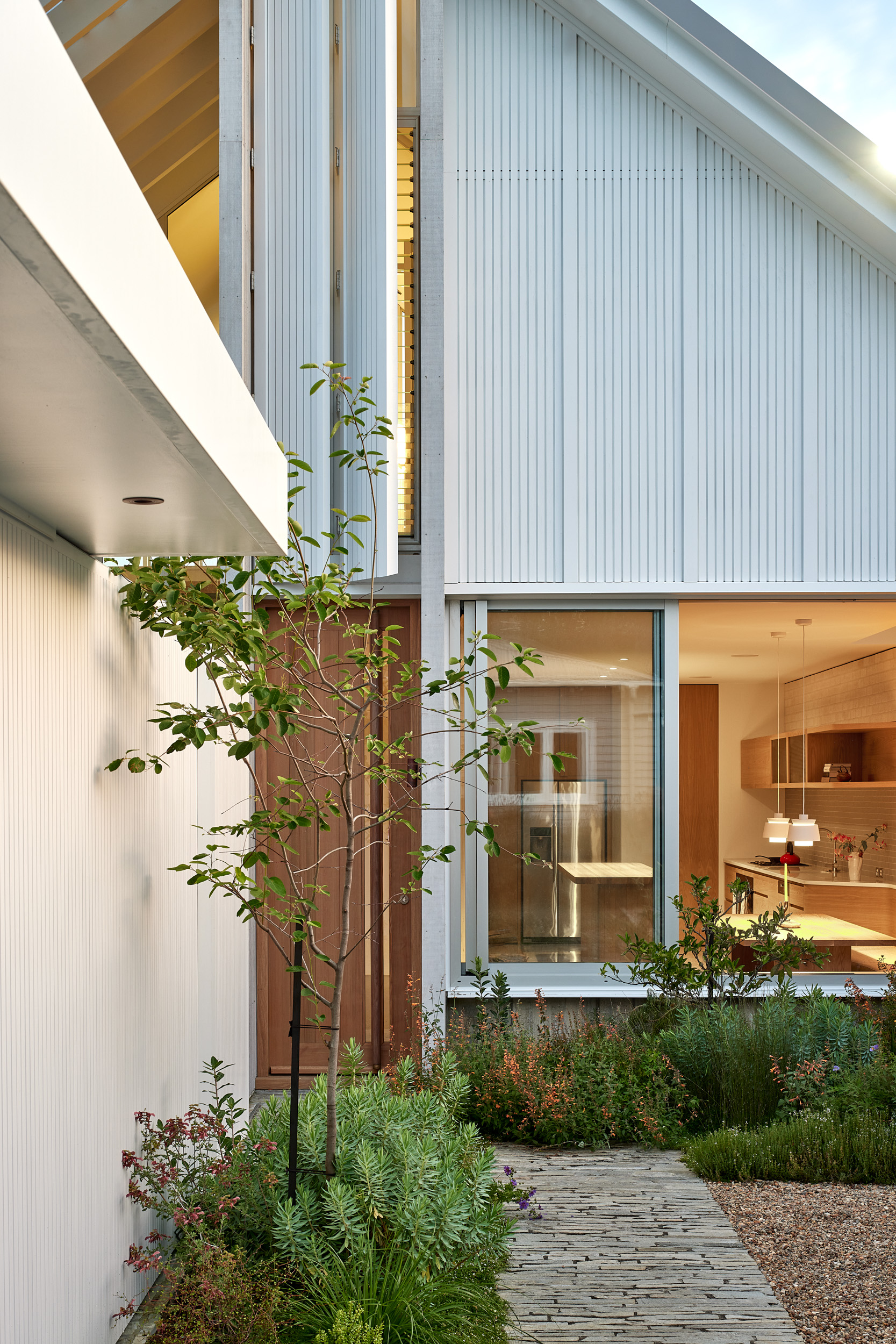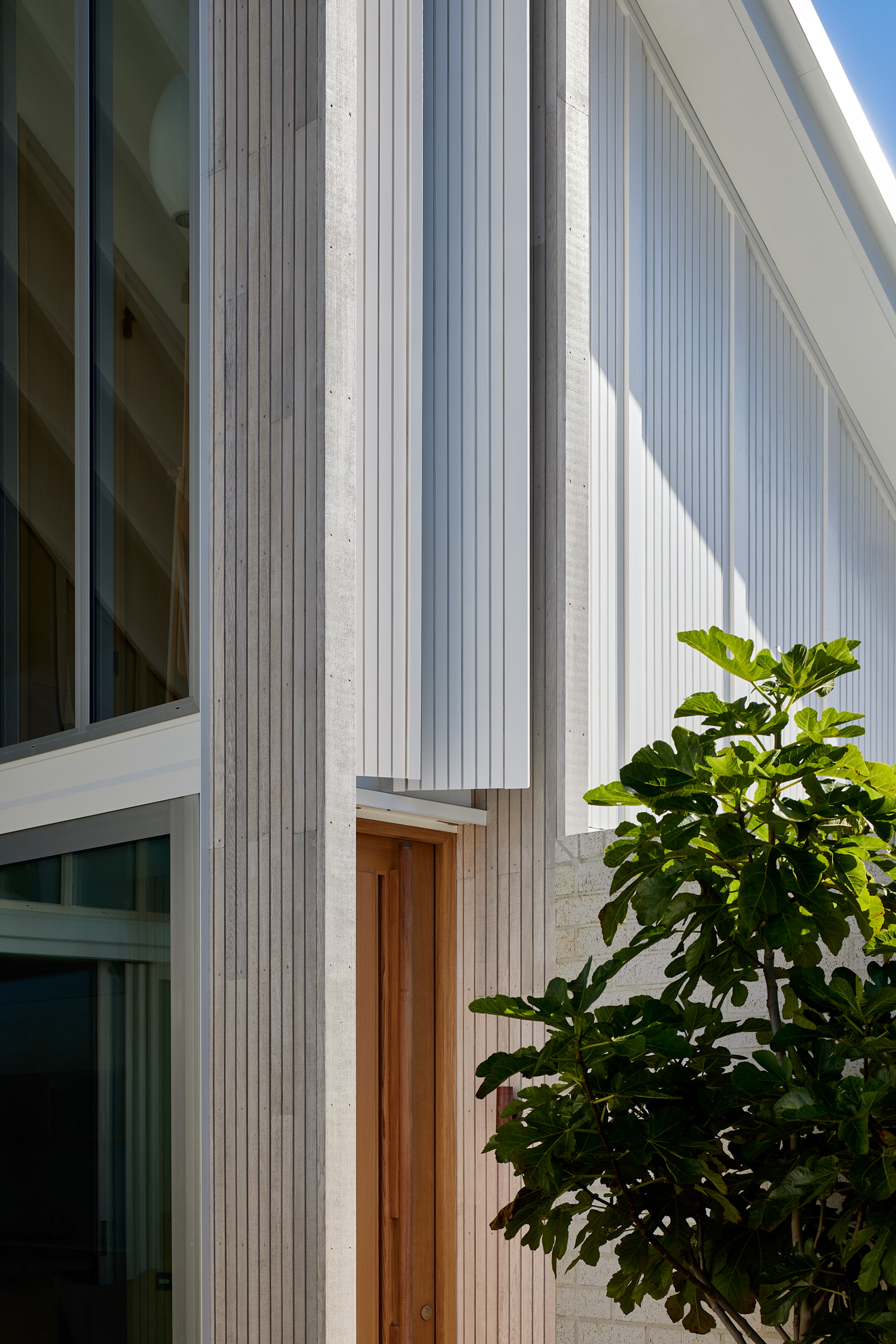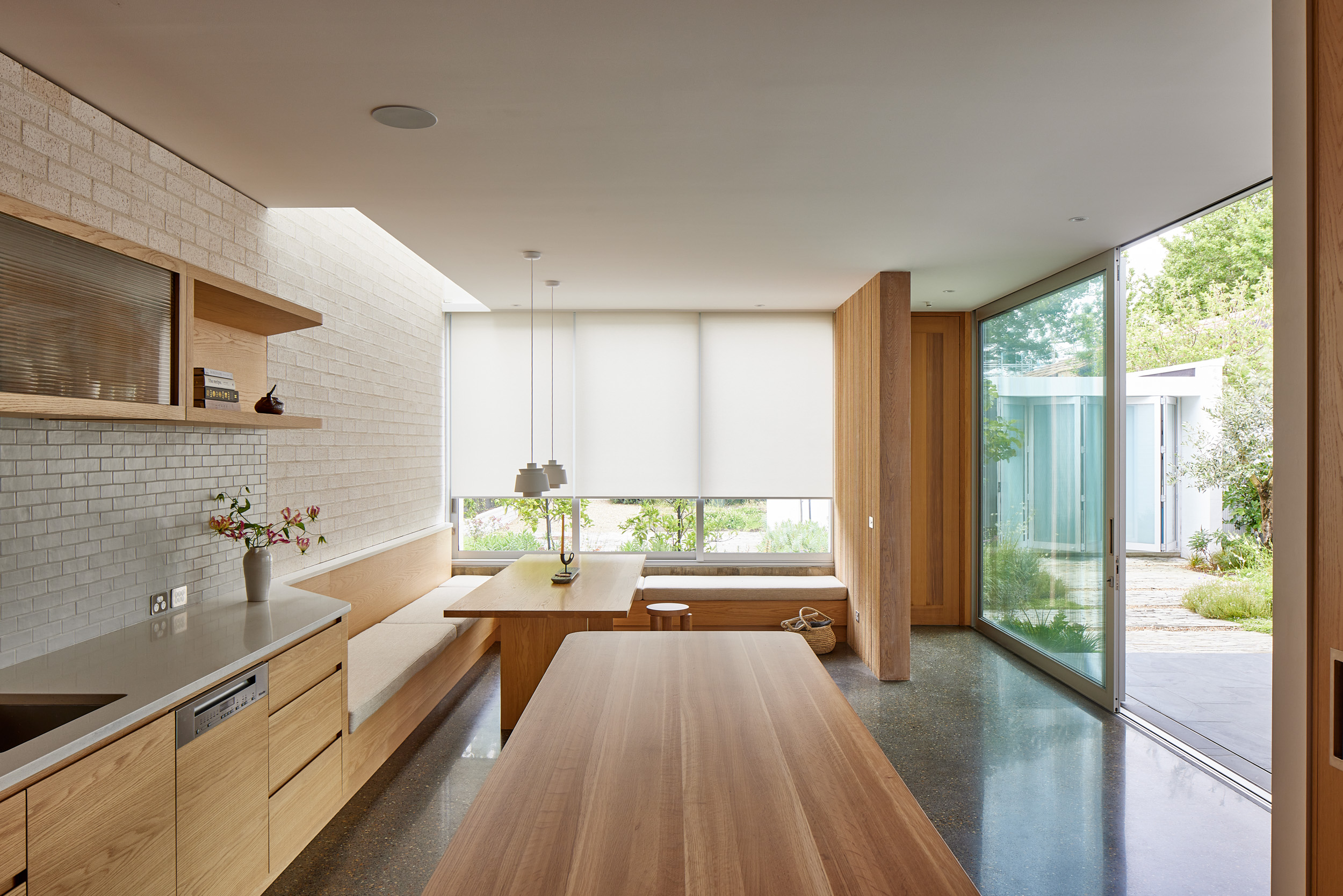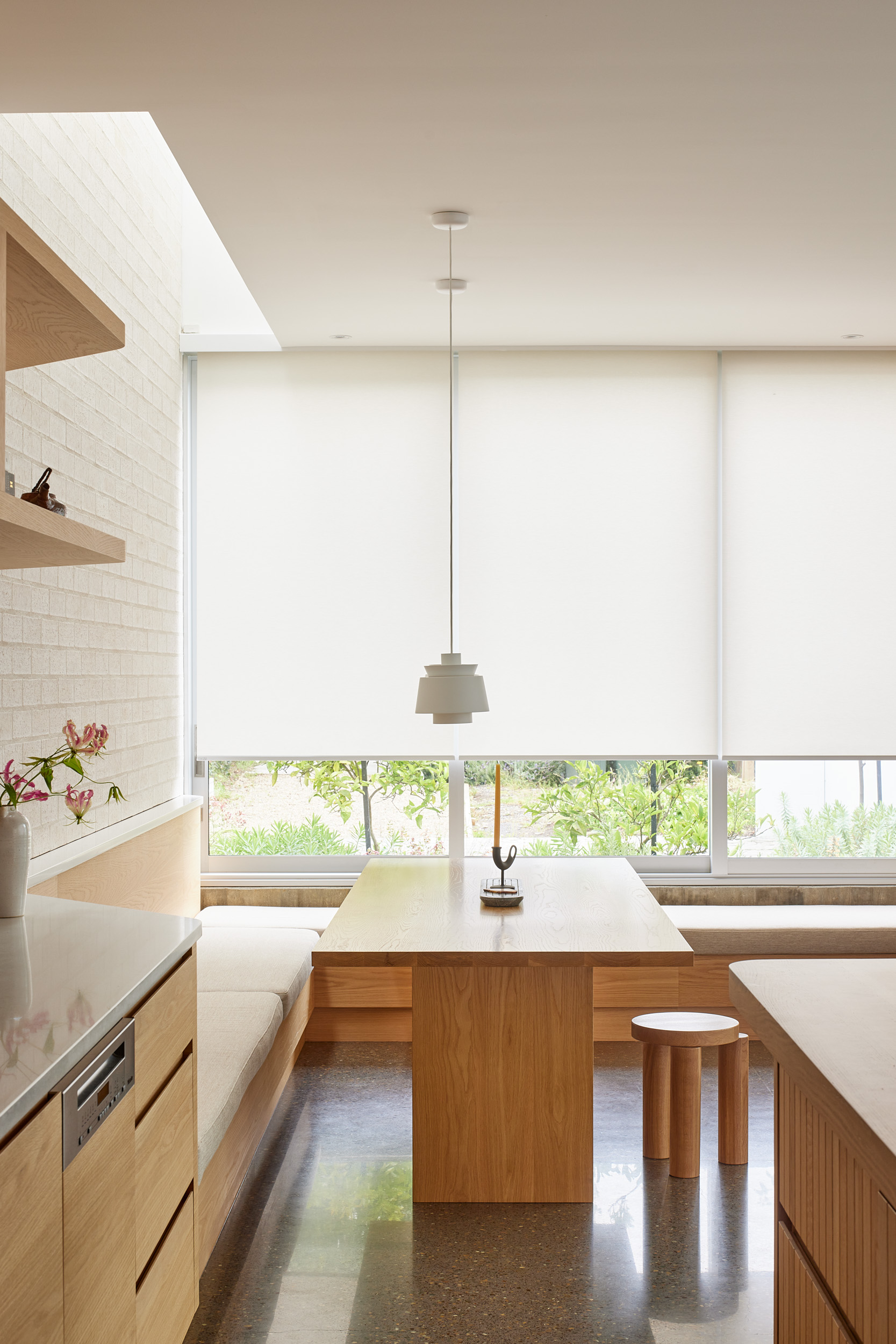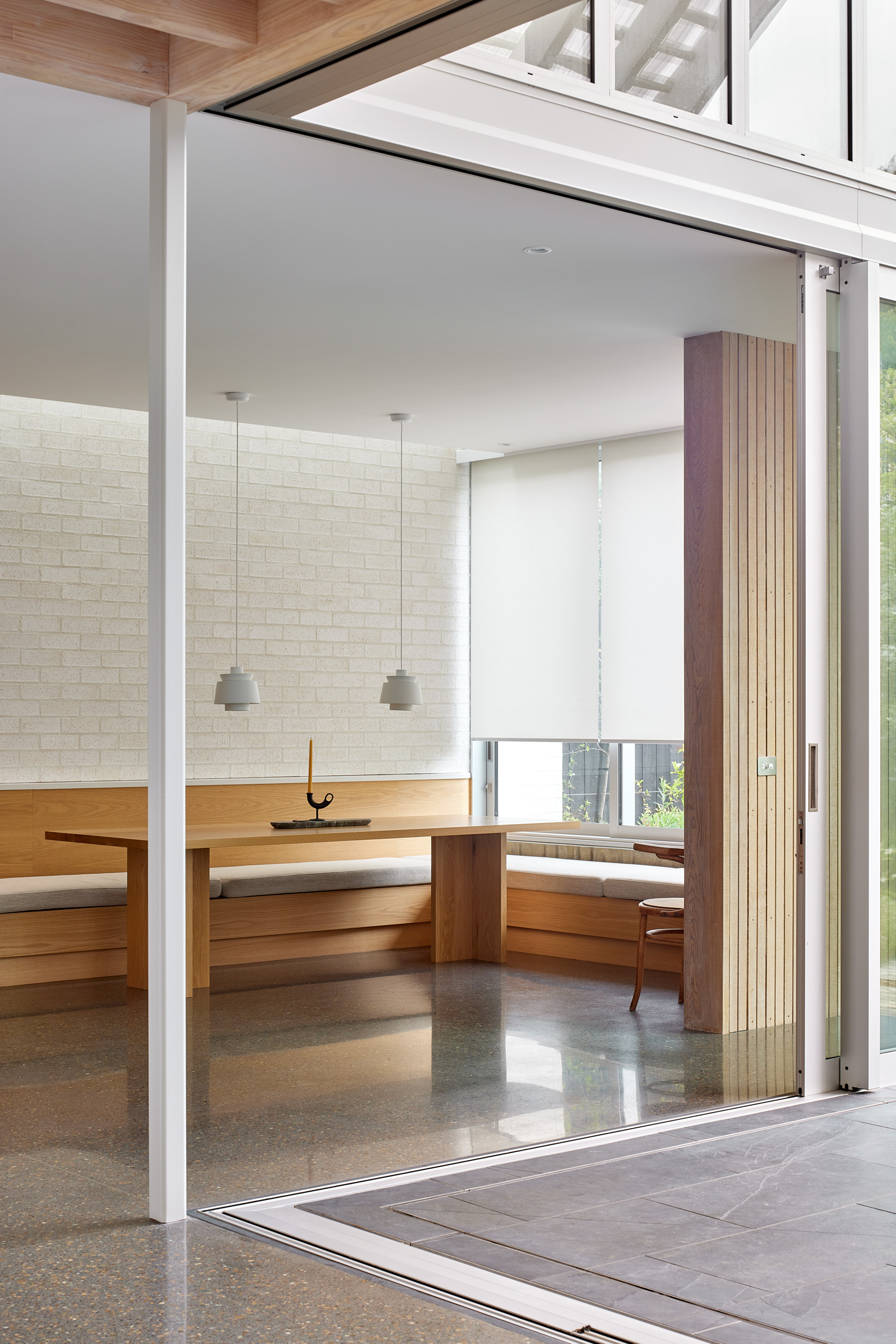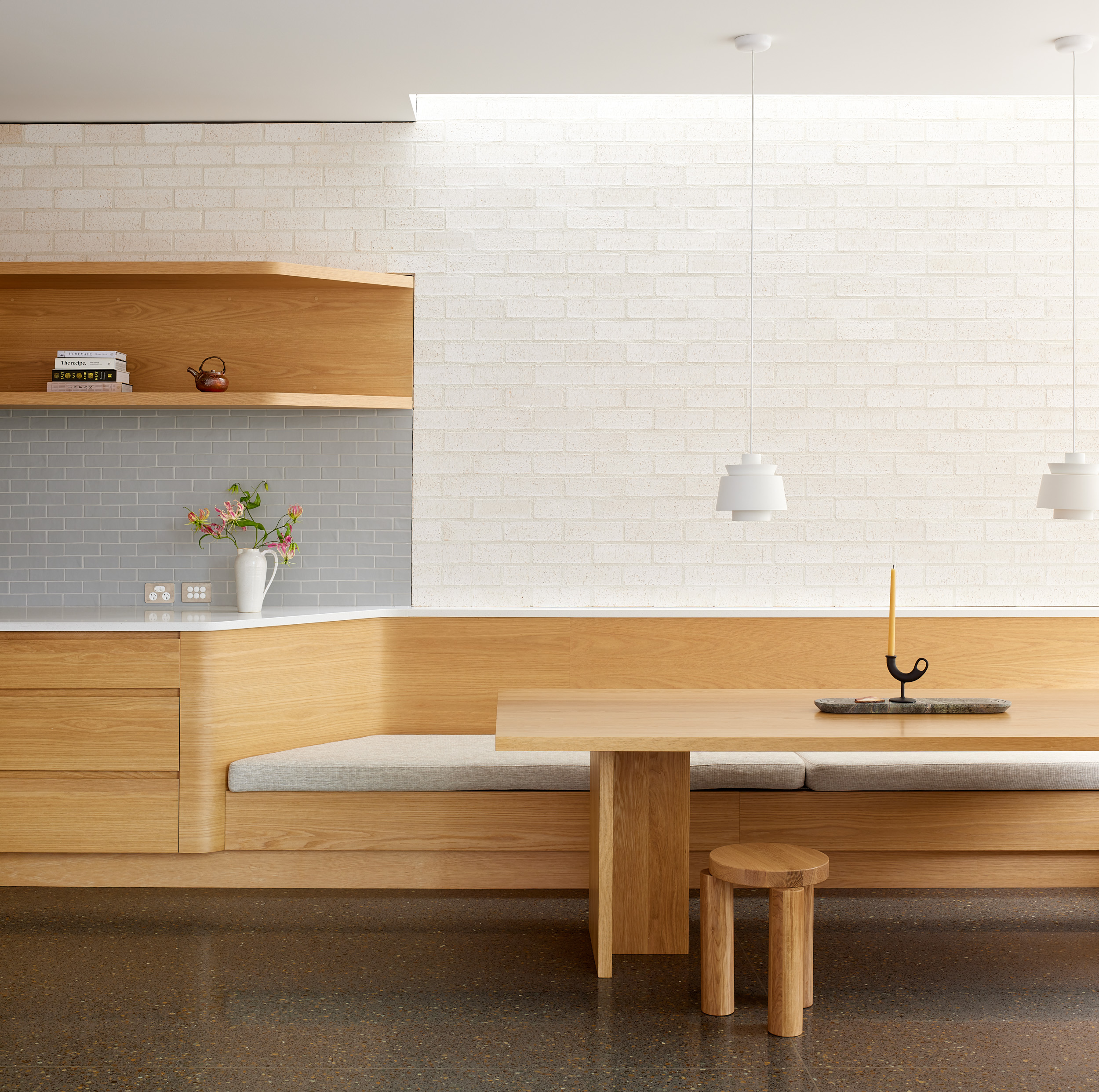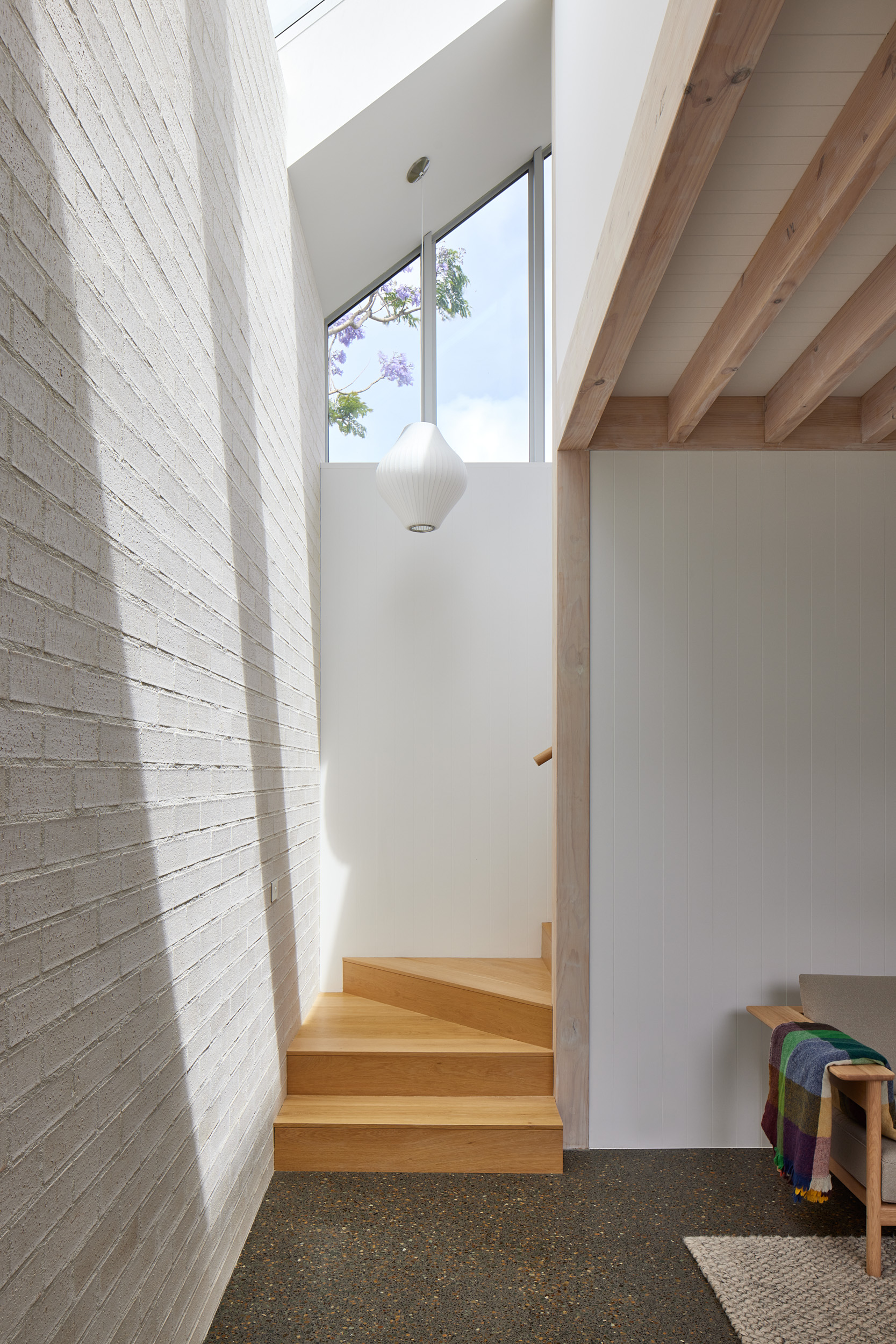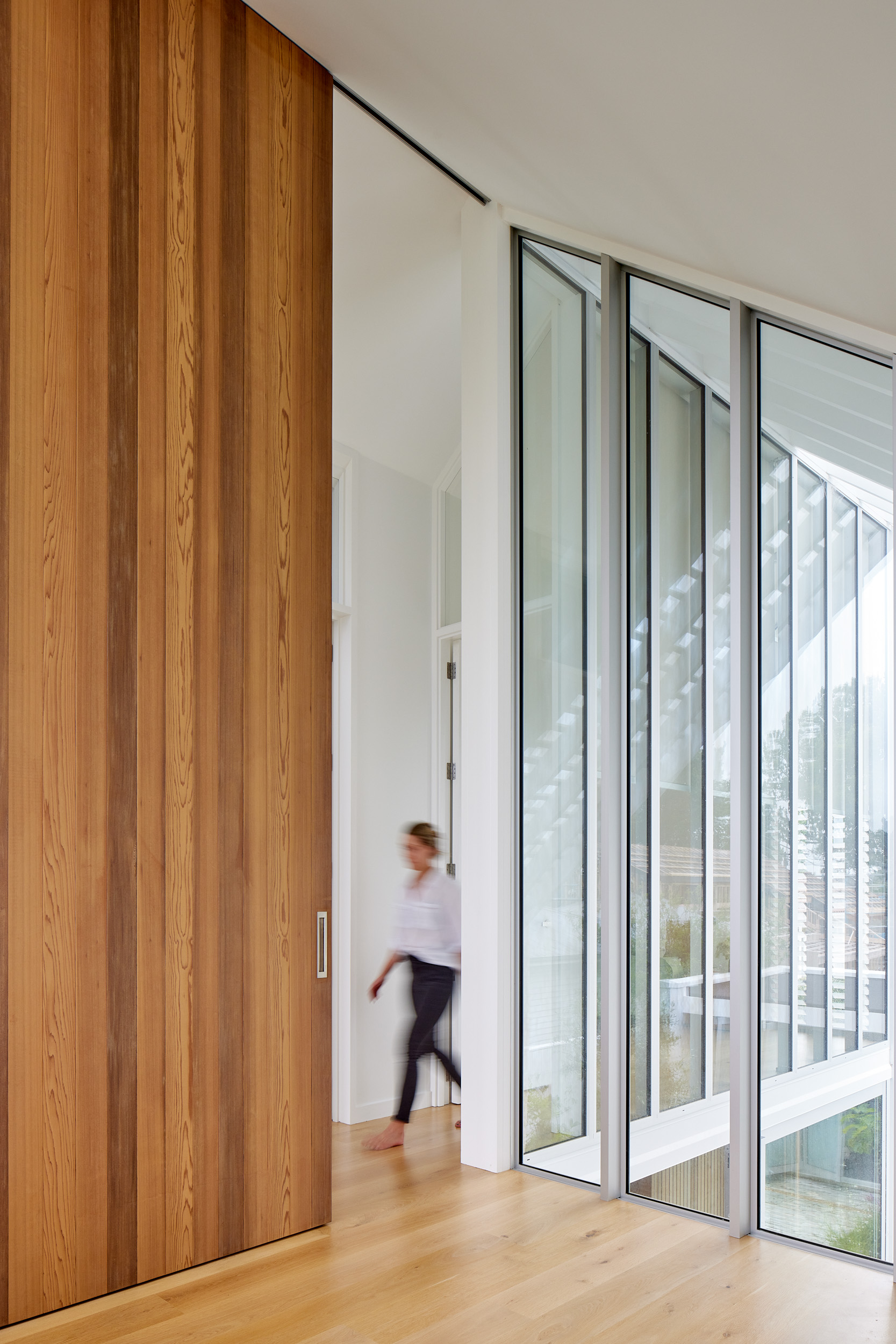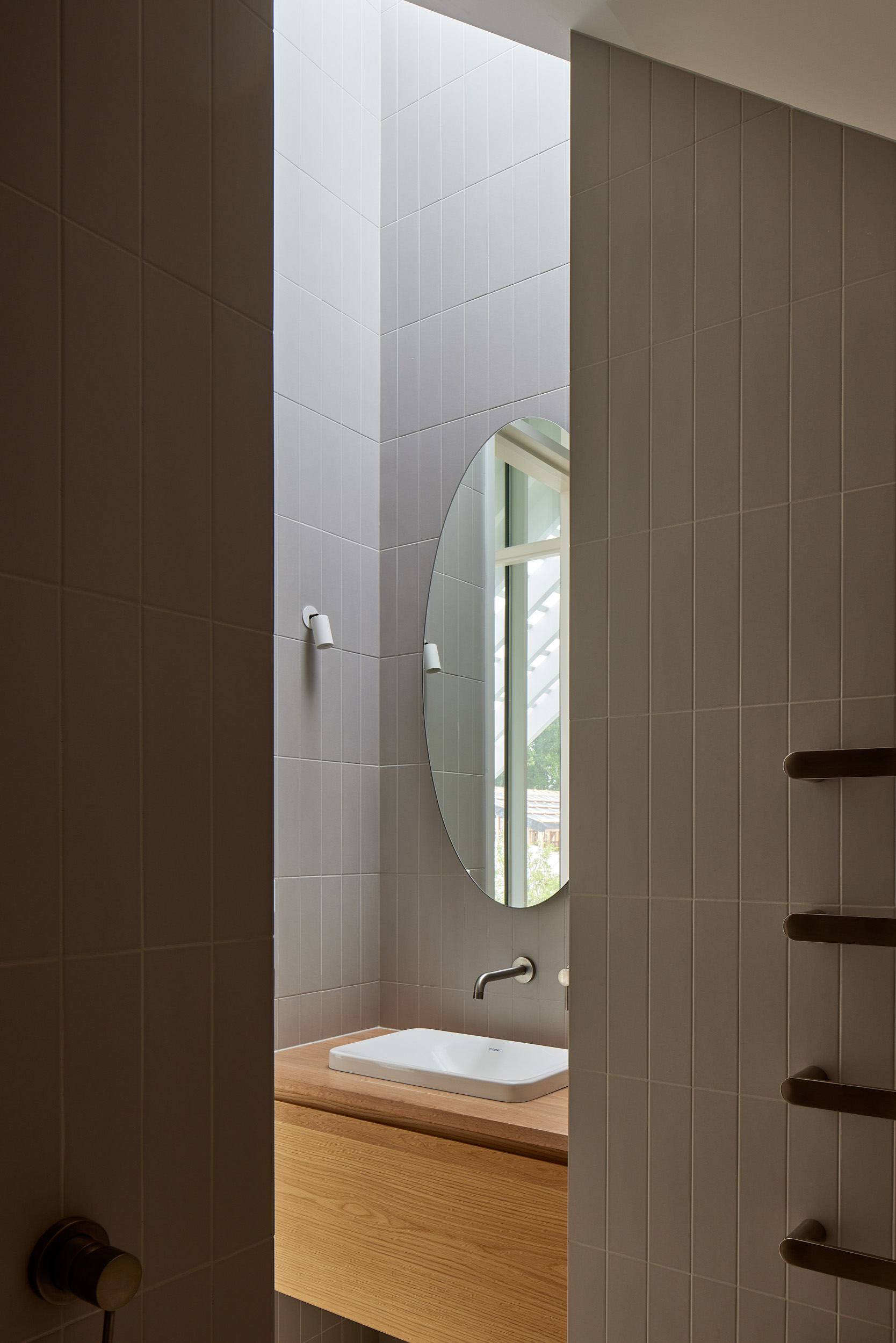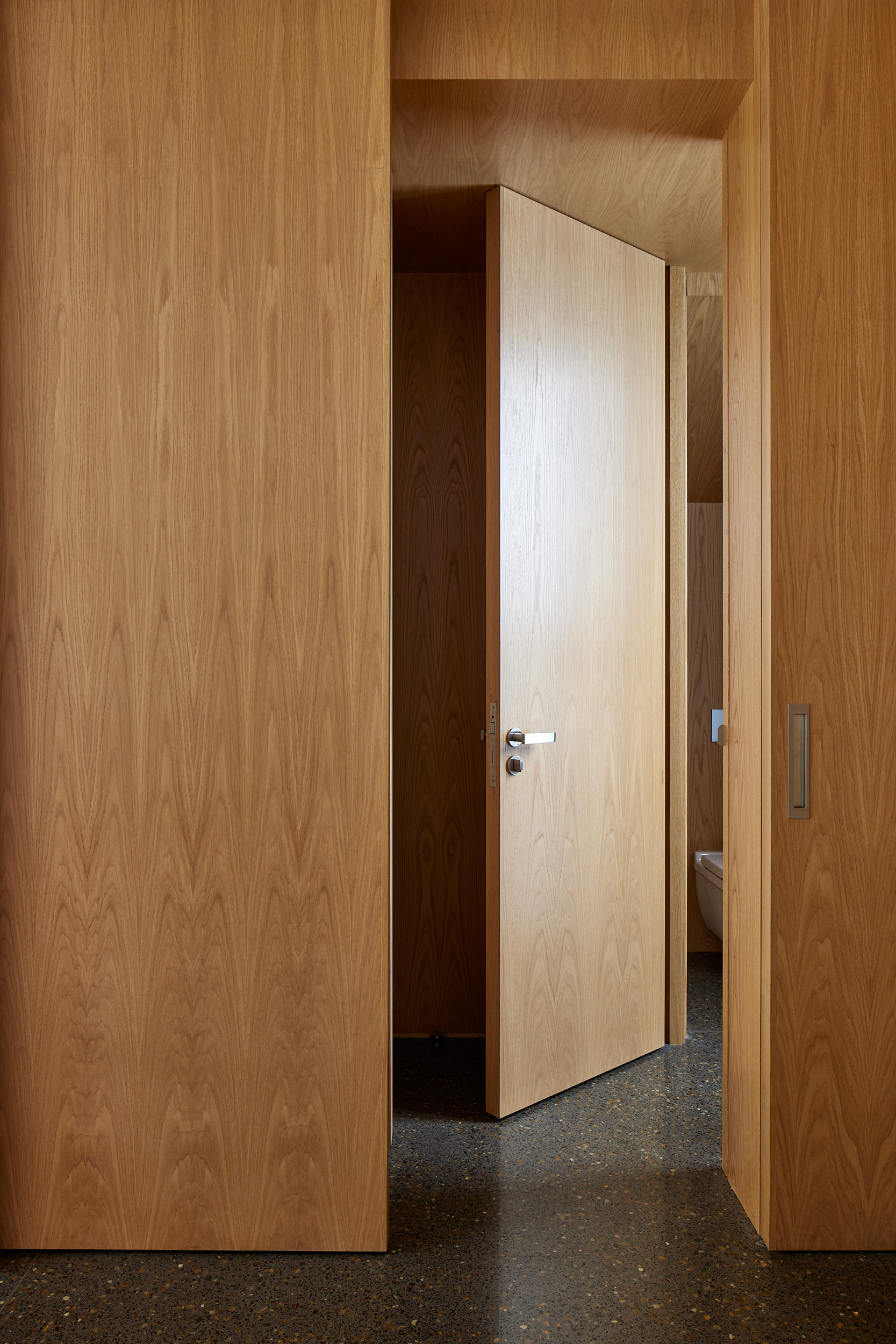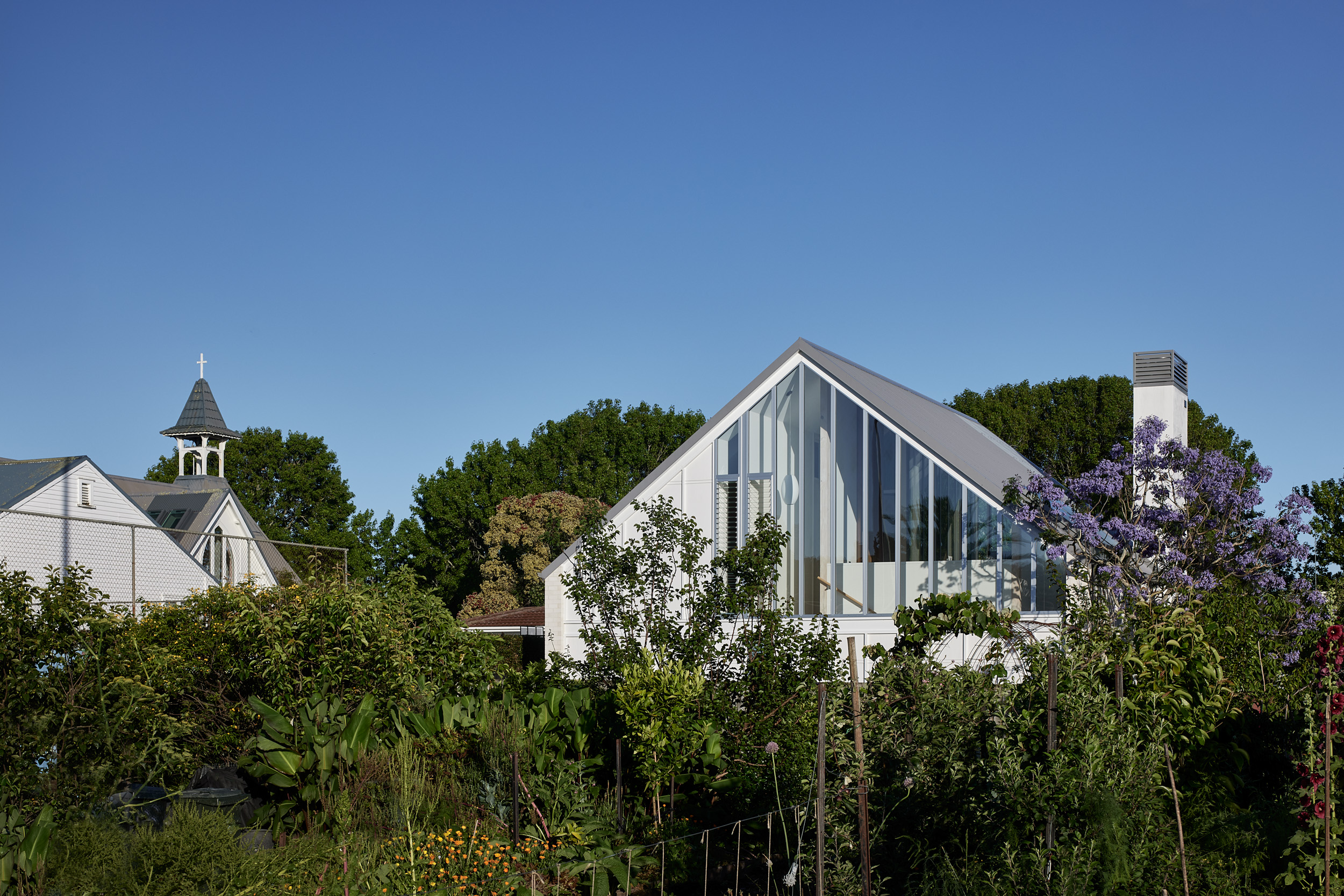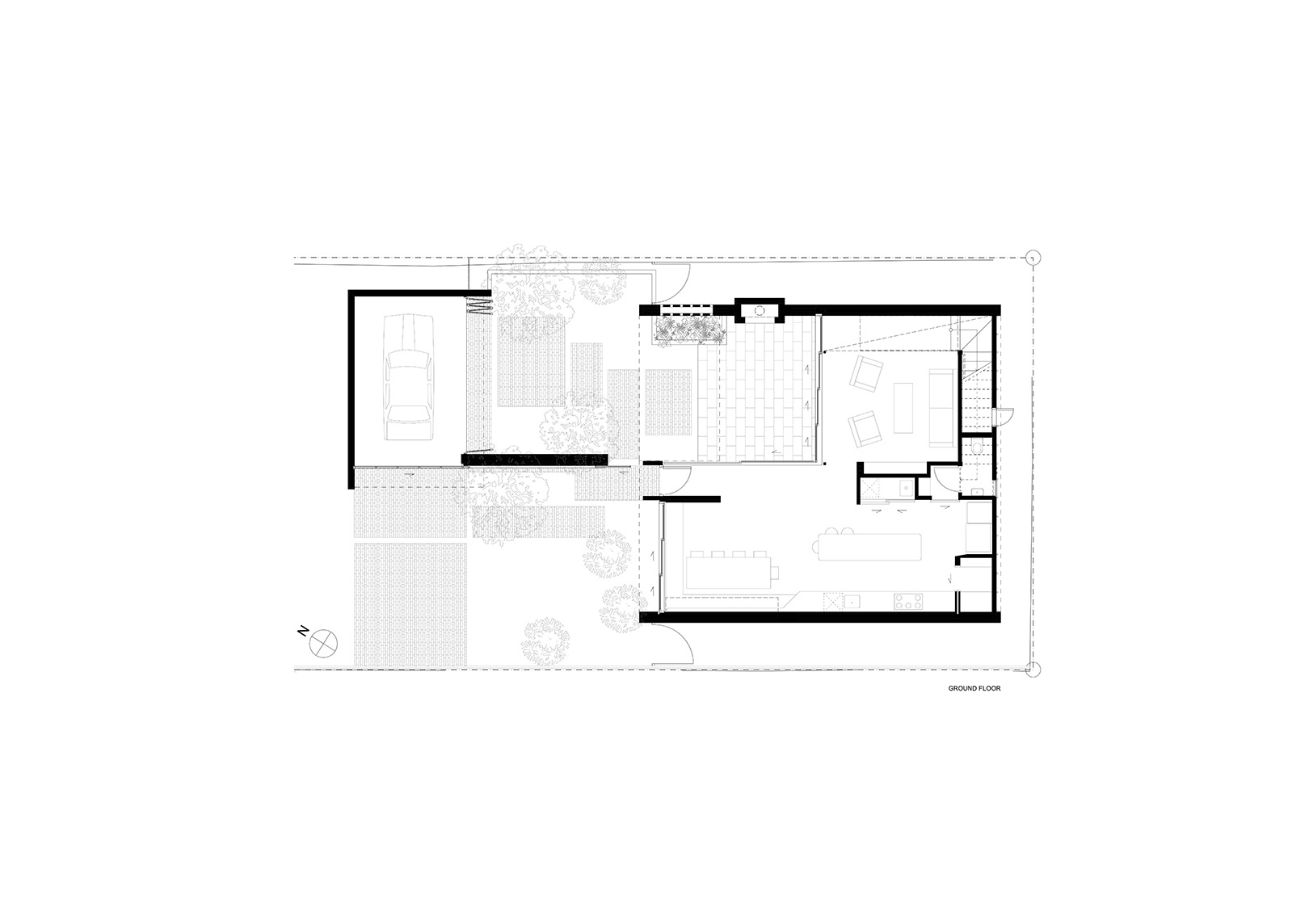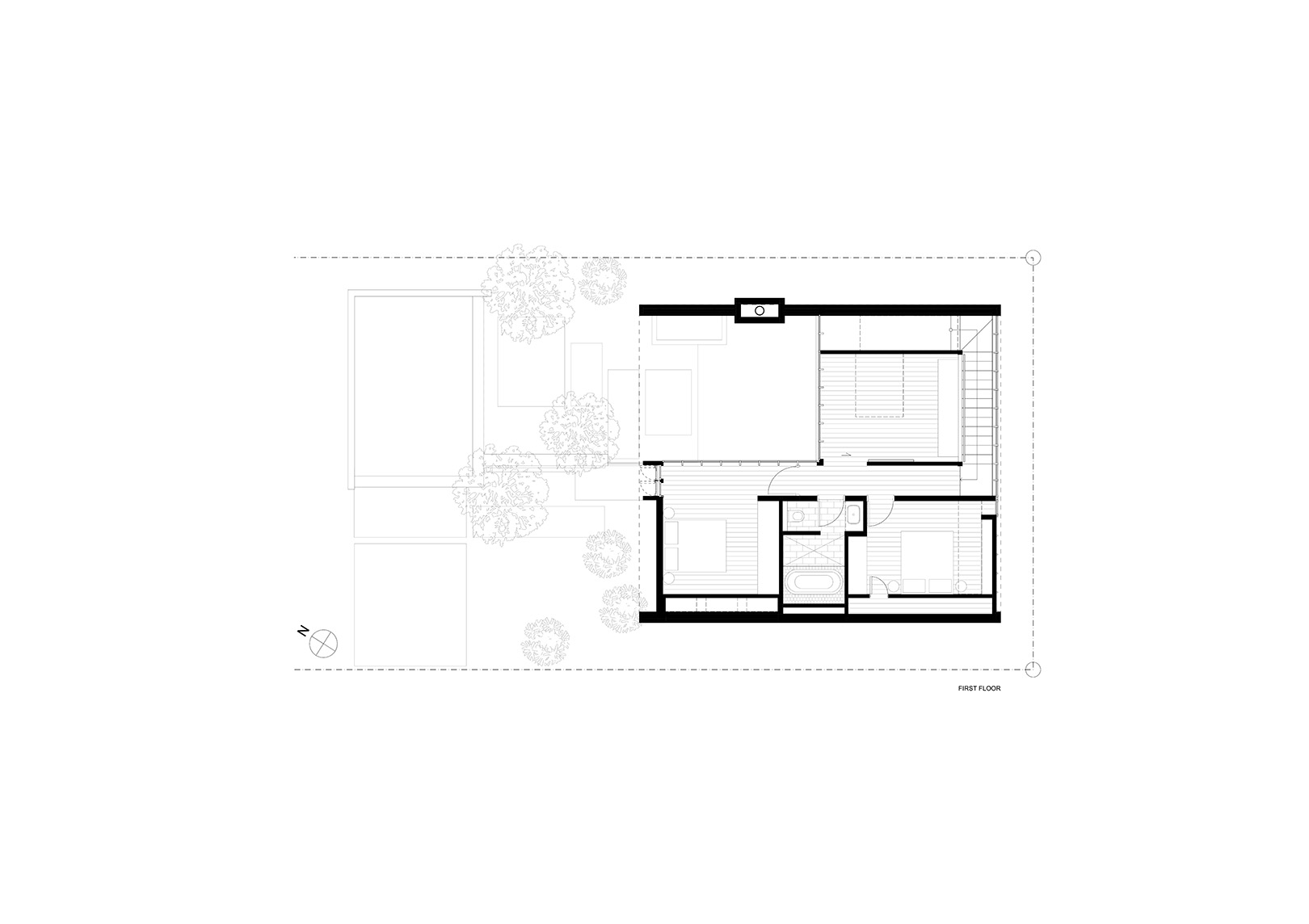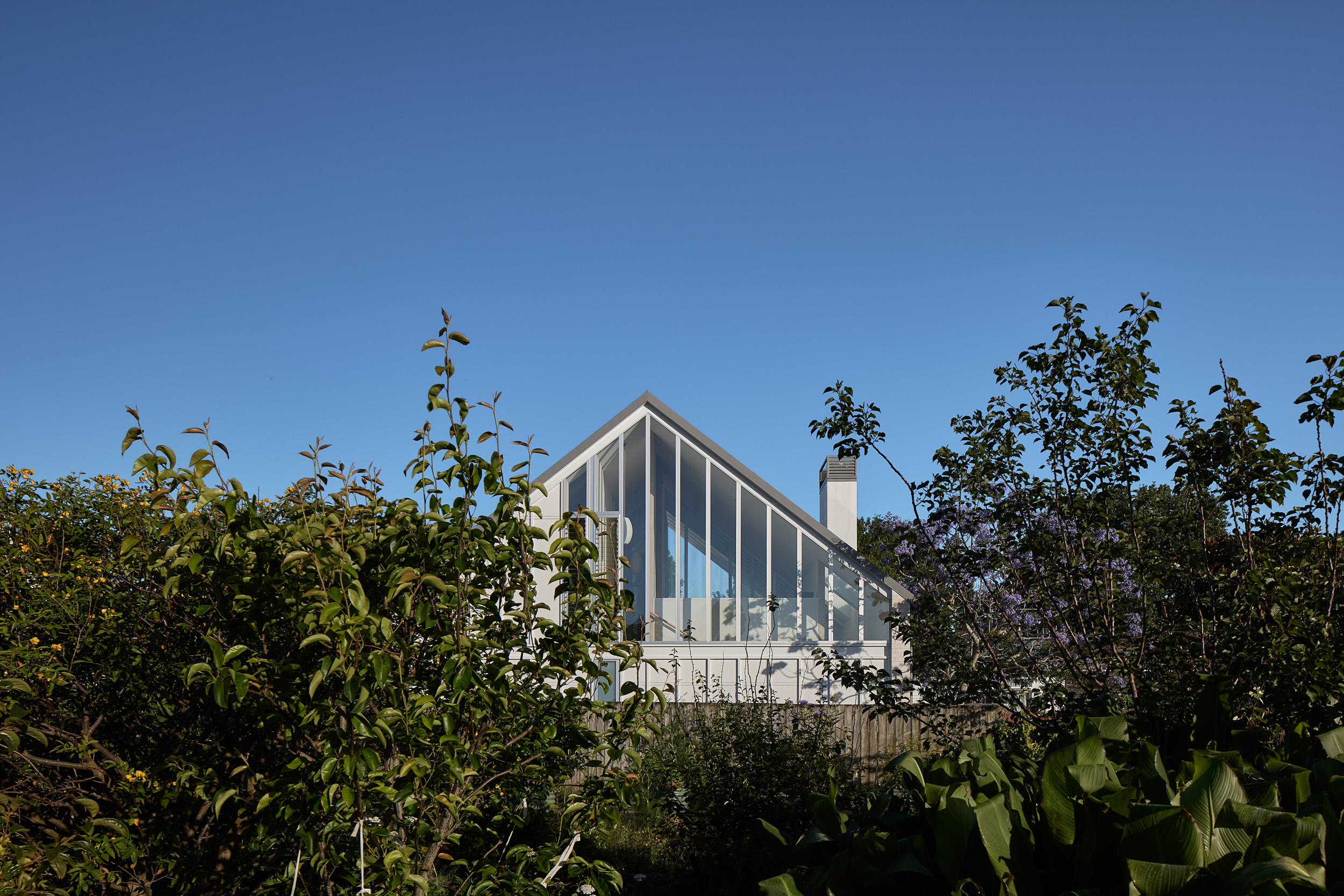Point House
This project reimagines a suburban single house site as a two-house, inter-generational development.
The house is situated behind an existing bungalow and on what was previously an empty backyard. The 665m2 site's point of difference in its suburban context is a rear boundary that adjoins a community reserve, comprising a rambling community garden and tennis, bowls, and croquet clubs. To the west resides a lovely 100-year-old church and hall.
Informed by this context and the need to design a simple, relatively cost-effective house, a gabled roof form felt the appropriate response. The aspiration was for a pure, unadorned little building so an edited palette of materials was chosen. New Zealand-made cream bricks, oak, polished concrete, painted board and batten cladding, and glass were selected for their simplicity, durability and textural richness, and assembled in a carefully considered way. In places, structural elements have been left exposed to provide added texture and to emphasise the purity of the simple gabled form.
At 180m2, including a 22m2 standalone garage-studio, this is a modest house that feels large. A square plan is organised around a double-height outdoor room that adds to the sense of generosity. Exposed rafters articulate this space and the roof dissolves into a transparent canopy to capture light and emphasise the structure's delicacy.
A standalone garage-studio bookends a walled courtyard garden and sets up internal views, as well as providing privacy from the front house on the site. Longer views and spatial richness are afforded by the double-height volume of the outdoor room, around which most spaces in the house are organised. Glazing over the south-facing stairwell allows views from an upstairs office across the community garden and tennis courts, while north-facing glazing enclosing the upper level of the double-height terrace captures a seasonally changing outlook towards street trees.
Compact and carefully crafted, the Point House achieves generosity of space in an elegant and uplifting way and provides a model for a more economical way of living within our urban centres.
Photography: Simon Wilson
| 2023 | NZIA Auckland Award |

